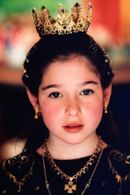Ed Gein, a rural Wisconsin farmer, grew up on a farm near Plainfield with his brother Henry, father George, and mother Augusta. George, a tanner and carpenter, was often drunk, while Augusta, a religious fanatic, exerted a strong influence over the family, warning her sons about the dangers of premarital sex and railing against "evil" women.
After their father's death in 1940, Henry died four years later under suspicious circumstances, leaving Ed to live with his mother, who died of a stroke in 1945. Ed inherited the farm and remained there, sealing off his mother's bedroom and the rest of the house, living in the kitchen and one other room.
In the 1950s, Ed began visiting local cemeteries at night, digging up graves, and removing body parts. He used these remains to create furniture and clothing, including chair seats and lampshades made from human skin. He would often wear these skin coverings, including face masks, and dance outside in the moonlight.
Ed's first murder took place on December 8, 1954, and he committed his second murder on November 16, 1957. His final victim was attacked in her store, and her body was later found in his shed, hanging by its heels.
Ed was arrested, confessed to his crimes, and was sent to Central State Hospital. He was later diagnosed with chronic schizophrenia and found "not guilty by reason of insanity." He spent the rest of his life in institutions, including Mendota Mental Health Institute, where he died quietly in his sleep in 1984.
Ed Gein is buried next to his mother in the Plainfield Cemetery, his grave a testament to the darkness that lay within him.






















